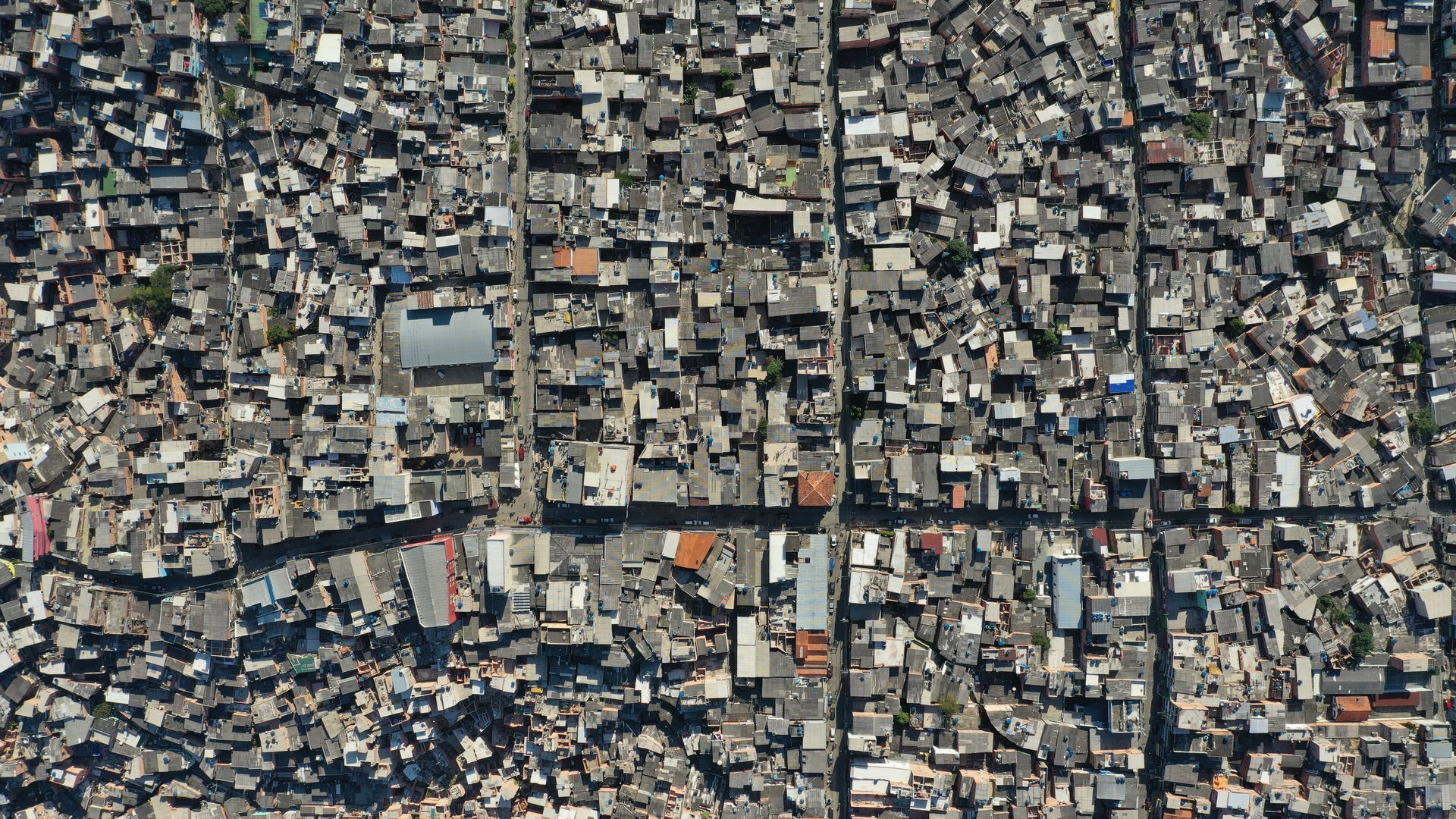Impacts of the Automobile Centric Land-Use Design
Transportation is the foundation to all urban growth

In the US, nearly every aspect of life involves the primary source of transportation: the car. Automobiles serve as the center piece of our car culture society. The foundation of physical interaction in urban design is how a person gets from one place to another: transportation.
Having said this, there’s a serious concern about the automobile being totally unsustainable. This brings an even larger consideration that says basing an entire society on an unsustainable foundation is problematic. With the automobile-centric urban land-use design (urban growth centered around the automobile) based on unsustainability, its negative impacts are seen beyond just the environment. The effects of unsustainability are found in the environment, the economy and effect society socially.
In Western society, today’s car culture is the victim of its own doing. Automobile and related industries have far-reaching cultural effects beyond what’s easily seen. Throughout the 100-year history of the automobile and its aggregate of related industries producers, financial success is its primary goal. This is merely a statement for any reasonable business objective. In an automobile-centric society there are further-reaching consequences that affect its participants.
Negative impacts of the automobile
An automobile-centric car culture is an amalgamation of inefficiencies that include land consumption for urban growth. In considering what makes the automobile unsustainable, the first measure is its basic energy inefficiency as a matter of basic physics. An average car weighs three thousand pounds. In terms of inefficient, this says it takes a 3,000-pound car to carry a 200-pound load (one occupant, with baggage). The larger the vehicle, the heavier it is, and the more energy is spent carrying its own weight.
The impact of a car’s ability to become more energy efficient regarding its fuel consumption, has no bearing on the inefficiency of travel time to society in traffic congestion and the reflecting lower local economic productivity. This again, coincides with the nature of building a society on an unsustainable foundation.
In an automobile-centric society, land consumption is engulfed by the automobile. Including freeways, surface streets, driveways, shopping mall parking, and other parking, a staggering 70 percent of all land in automobile-centric urban land use design (sprawl) is consumed by the automobile. The human component is insignificant, and the automobile is parked 95 percent of its life.
In his book, The High Cost of Free Parking, UCLA Professor of Urban Planning Donald Shoup explains the many negative design issues associated with automobile parking. He reasons that free parking is a terribly expensive public subsidy.
The result of basing our culture on an unsustainable single source for mobility gives us uncontrollable traffic congestion, destructive stress-related behavior, reduced productivity due to commute time, increasingly negative social impacts from the isolationism of single-occupancy vehicles, high fuel costs, declining air quality, and a loss of prime production farmland.
Automobile-oriented areas are unfriendly to any other form of transportation. Not only is walking on a freeway hazardous, it’s illegal. Freeway systems are visually intrusive, noisy, stressful to navigate with so many rude and bad drivers, the vehicles generate negative impacts of poor air quality, and with fuel costs at the pump, have produced negative impacts to local economies. Society needs transportation methods that alleviate all levels of harm to reach sustainability.
According to the Bureau of Transportation Statistics, there were 36,560 automobile-related fatalities in 2018. Combining figures from the National Safety Council (NSC) show that for every 100 million miles traveled in the early 2000s, there were 182.5 accidents and 2.19 fatalities. The current rate is 12.0 fatalities per 100,000 population.
More recent statistics from the US DOT show that there are 17,000 automobile accidents per day in the US.
Recent studies are linking the automobile to health issues:
“Studies Link Air Pollution to Mental Health Issues in Children.” Cincinnati Children's Hospital Medical Center, September 25, 2019.
“References: Living Near Busy Roads or Traffic Pollution.” University of Southern California Environmental Health Centers.
“Living Near Highways and Air Pollution.” American Lung Association, January 5, 2021.
In an October 21, 2004, ‘The Independent’ article by Health Editor Jeremy Laurance, the London newspaper headline states, “Car fumes and traffic stress trigger heart attacks.” he article goes on to state, “Fumes from car exhausts, noise and stress brought on by traffic congestion are likely to be the main causes of the increase in risk, researchers say. Air pollution is known to be a factor in heart disease, which develops slowly over decades, and research has shown that people living close to a main road have twice the risk of dying from the condition.”
To add to aberrant consequences, a high number of people who live in the automobile centric society have an affinity to their car; this inanimate affection produces a fear to be without it. The inertia that resists change produces uncertainty and hostility against disruption. An overall societal reaction to this type of mental anguish can push away ideas which promote anything different or new. New technology transit is disruptive innovation. New technology that would replace automobiles doesn’t even exist yet.
More from the book: Rising from Unsustainable are the examples of economic and social impacts from the automobile centric land-use design.
Economic
The economic impacts of the automobile’s unsustainability means that the currency used to support the car are extracted out of the community. Ever hear the phrase “buy local, spend local?” This term is what creates regional economic sustainability. A dollar spent locally allows that dollar to stay in circulation, being used again, and again within a local area. When that money is removed out of the local area, the money is gone; it can no longer be used locally. Automobile-centric land-use design is economically unsustainable.
The first product of economic unsustainability of the automobile is the purchase of an automobile. Today’s purchase price of an automobile is what, on average? $50,000? That amount is removed from circulation in a local economy, never to be recovered for circulation in that community unless the car was manufactured in that local community.
Then there are the fuel consumption rates. Averages vary from region to region. In a county that consumes 500,000 gallons of gasoline per day, at the current price of more than $4 per gallon, that is $2 million per day (less 2 percent for the wholesaler and retailer) permanently extracted from ever being used and circulated in that community. An even greater financial extraction from the community are insurance costs per vehicle, at an average cost of $120 per month per vehicle. Again, in a county that has 700,000 registered vehicles, even at $100 each per month, that is $840,000,000 annually removed from the area. This is economic unsustainability based on the design of automobile-centric land-use.
Social
Here’s where things get odd. The style of an automobile is created by designers. Primary influences relevant to these designs are current trends in fashion. Car sales are promoted by advertising agencies’ campaigns exclusively measured by fashion trends to encourage customer purchases. While this is reasonable in business, its effects reach further than mere car sales in the automobile-centric society.
The date of every car manufactured can be visually ascertained by its style of that decade. Further reaching social implications of fashion can be seen in the patterns and styles of the tract housing built to accommodate automobile-centric urban growth. The houses built in the 1920s are different than those of the 1930s, 40s, 50s, etc., through newly built dwellings today; every decade can be visually distinguished in its style.
One of the negative repercussions from fashion-only production in the automobile-centric society is the consequence of worn-out parts. Trends in design no longer fashionable fade into a negative social enigma. Outdated tract homes and strip malls no longer in vogue stimulate economic activity to newer growth centers of sprawl development. The significance can be seen in every urban area that is several decades old.
As clothing fashion styles change from season to season, the automobile and tract house styles make major shifts every decade. Inasmuch as fashions quickly go out of date, each tract style becomes out of fad after a decade and a new tract house area becomes popular. The nature of automobile-centric society follows new trending patterns based on that era’s marketing popularity in cultural and sprawl development.
But, what’s the point of talking about this? Pointing out problems about things that people are satisfied with is futility. “Give me an alternative” is the point.
What’s the greatest source of energy in the universe? Gravity. There is more to gravity than throwing something up in the air and watching it fall to the ground. How many people are studying gravity as a source of motion for transportation? This is one of the primary pursuits of CATTCC. To discover answers and develop transportation solutions.



